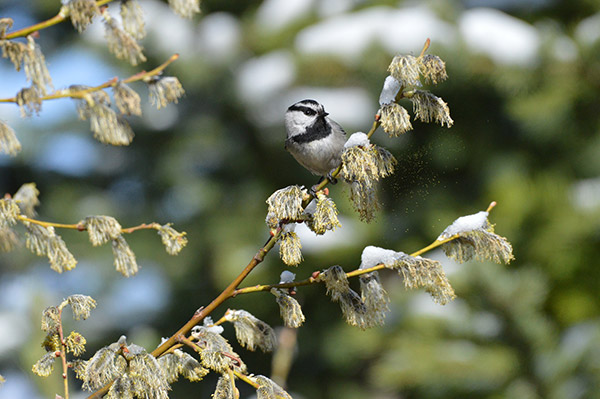Last updated: December 30, 2020
Lesson Plan
Forest Poetry

- Grade Level:
- Upper Elementary: Third Grade through Fifth Grade
- Subject:
- Literacy and Language Arts
- Lesson Duration:
- 60 Minutes
- Common Core Standards:
- 8.EE.5, 3.W.10
Essential Question
How do forests inspire you?
Objective
Students will be able to share highlights of their forest experience with their classmates, and express their observations and feelings about the forest in a poem. They will experience nature as the inspiration for a poem, and write a poem.
Preparation
- Determine a large area in a forest where students can spread out and have their own special spot to write their poem.
- Pencils
- 5x7 index cards, one for each student
- Laminated sheet with an example of a haiku and cinquain poem.
Procedure
1. Ask the students to sit down in a circle. The first person begins by telling something they observed, felt, or did in the forest: “I saw a beetle boring into the wood of a fallen tree,” or “I liked the fresh smell of pine needles in the forest.”
2. The next person does the same, and then repeats the statement of the first player. This continues all the way around the circle, until the last player is left to repeat the statements of everyone in the circle. Depending on the size of the class, you may want to divide into two or three circles, so that it is not impossible to repeat all player’s statements.
3. Begin a discussion about poetry with the entire class, asking the students what a poem means to them. Students have a tendency to get nervous over the thought of writing a poem, thus the discussion can aid in breaking down a poem into the concept of a grouping of words designed to relate a vivid and imaginative experience. Encourage the students to use an abundance of descriptive words. Their goal is to try to bring the experience of the forest alive through their creative use of words.
4. Give the students suggestions of the types of poems they might create: rhyming poems, a poem in the shape of a tree, a haiku or cinquain (have an example of these types of poems for the students).
Haiku
Originated by the Japanese, Haiku consists of three lines of five, seven and five syllables each. The emphasis is syllabic, not rhyming.
For example:
The students explored
giant green pillars of life
dwarfed by their glory
Cinquain (Singkane)
Is another form of poetry based on syllables and derived from the French and Spanish words for five. There are five lines, and each line has a purpose and number of syllables:
1. the title in two syllables (or two words)
2. a description of the title in four syllables (or words)
3. a description of action in six syllables (or words)
4. a description of a feeling in eight syllables (or words)
5. another word for the title in two syllables (or words)
For example:
Hiking
Walking along
Breathing crisp, quiet, clean air
One with nature’s wonderful ways
Sharing
5. Point out a large area with boundary marks, and instruct the students to find their own special spot, a spot they feel attracted to. Have them put their paper and pencil down, and for the first five minutes, sit absolutely still, letting the world around them go on as it does when they aren’t there. Direct them to feel that they are a part of the natural surrounding; mentally move with the pine needles as the wind moves by, or hop along the forest floor with a robin searching for food. At your signal, they may begin their poem. Allow 10-20 minutes for poem writing, then call the students back for discussion.
Assessment Materials
Ask the students about their poem experience. Does anyone want to share their poem? (You may want to loosen up the group by sharing yours first!) If you had to choose between two comfortable, safe places to live, one with and one without a forest, which would you choose? Why? Is there a value in having places which protect trees?
